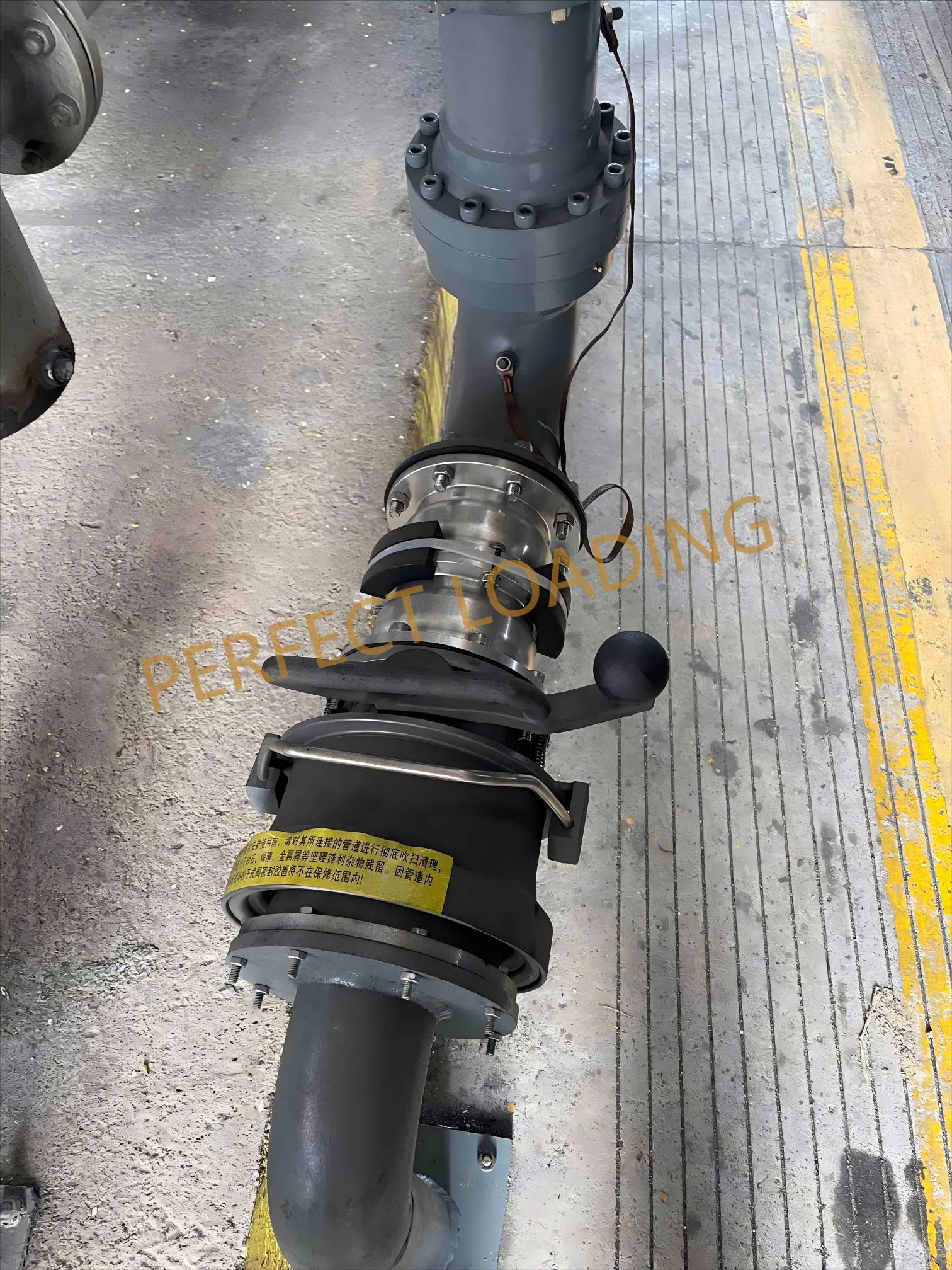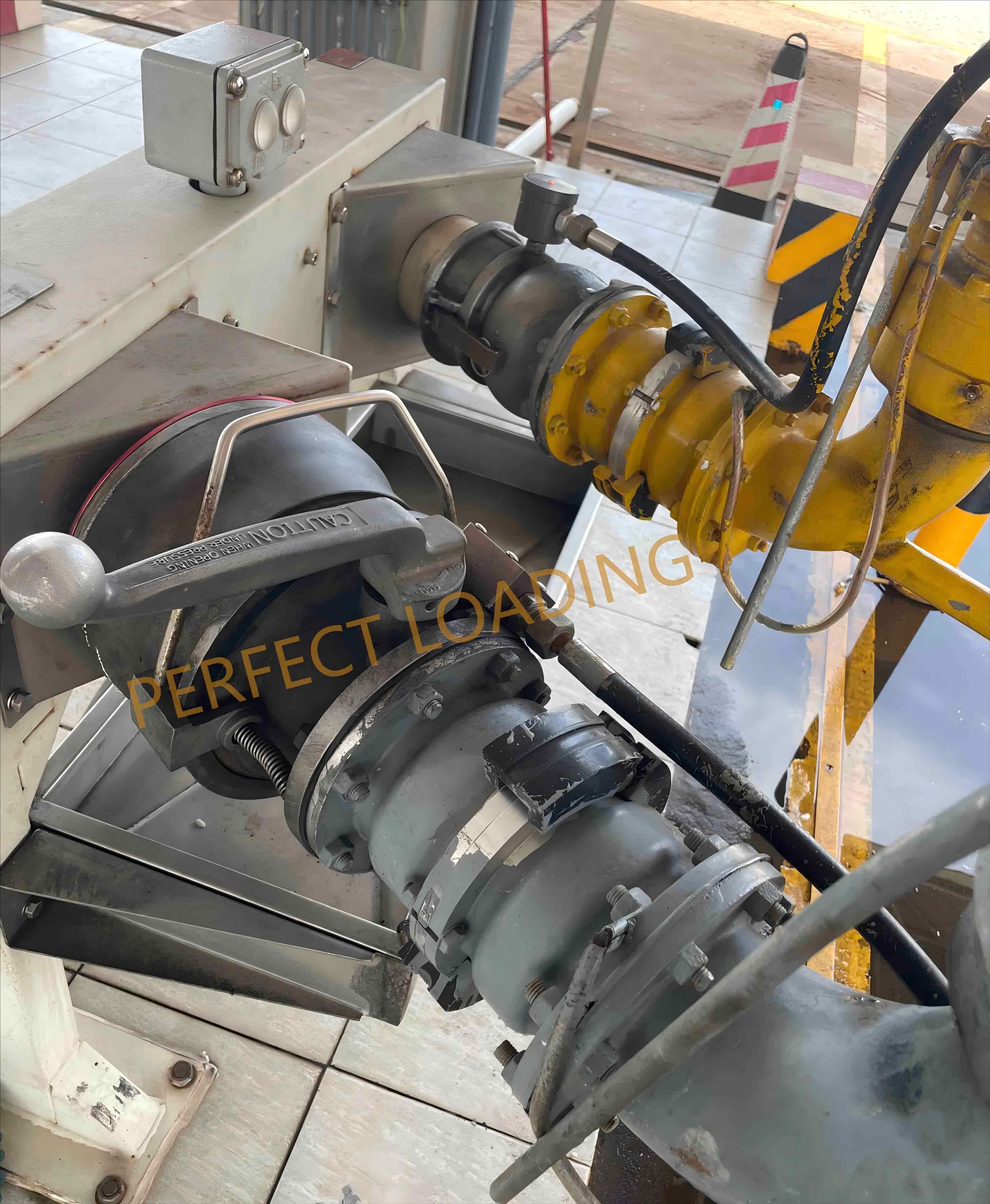J0452, J0453, LYNX, 1004D3, PLJ-100
EMCO Wheaton, OPW, PERFECT LOADING
Body: Aluminum, Stainless steel. Seals: FKM, FFKM
| Availability: | |
|---|---|
API couplers use interlocking latches—often four or five stainless-steel cams—to grip the tanker’s valve tightly. This “snap-on” design ensures a rock-solid connection that won’t budge, even under high pressure.
With seals made from materials like Viton or Buna-N, API couplers prevent leaks and drips during connection and disconnection, keeping your site clean and safe.
API couplers are built with operators in mind. Lightweight aluminum bodies, ergonomic handles, and carry loops reduce strain, while designs like the Emco Wheaton J0452 allow one-handed operation.
Many API couplers feature a U-pin or modular design for quick seal replacement—often in under 30 seconds with just a screwdriver. It’s like swapping out a lightbulb—simple, fast, and no special tools needed.
For volatile liquids like gasoline, API couplers often integrate with vapor recovery systems to capture harmful fumes. This keeps workers safe and the environment happy.

While specs vary by manufacturer (OPW, Emco Wheaton, or Excel Loading Systems), here’s a rundown of typical specifications based on industry standards and products like the OPW 1004D3 and Emco Wheaton J0453:
Standard 4” (DN100) for liquid couplers, matching the API RP 1004 standard valve size.
1.0 MPa (10 bar), handling high-pressure transfers with ease.
Buna-N Seals: -40°C to +70°C (-40°F to +158°F) .
Viton Seals: -20°C to +200°C (-4°F to +392°F) for hotter fluids.
Up to 2,250 liters per minute (600 GPM) for liquid couplers, ensuring fast loading.
4” TTMA (Tank Truck Manufacturers Association) flange for mounting to the loading arm.
Compatible with API RP 1004 male adapters on tankers.
4 or 5 stainless-steel cams for secure interlocking.
Safety interlocks prevent opening unless properly connected.
Typically 8.5 to 10 kg (19 to 22 lbs.), lightweight for easy handling.
These specs, drawn from products like the OPW LYNX Series and Emco Wheaton J0452, make API couplers versatile enough to handle everything from petroleum to food-grade liquids, all while meeting strict safety standards.
· Aluminum (Anodized): The go-to choice for most couplers, offering a lightweight yet durable frame. Hard-anodized coatings boost corrosion resistance.
· Stainless Steel: Used for collars, latches, and internal components to withstand harsh chemicals or salty air.
· Buna-N: Ideal for petroleum products like gasoline and diesel, but not for acids.
· Viton: Handles high temperatures and chemicals like benzene or ethanol, perfect for petrochemicals.
· FFKM: Capable of resisting over 1,600 chemical solvents, including strong acids, strong alkalis, organic solvents, ultra-high-temperature steam, ethers, ketones, esters, nitrogen-containing compounds, hydrocarbons, alcohols, aldehydes, furans, and amines, though it may swell in certain high-fluorocarbon solvents. FFKM is the preferred sealing material for conditions where Buna-N and Viton cannot meet the requirements.
· Stainless Steel: Latches, spindles, and poppet valves are precision-machined for durability and smooth operation.
· Hard-Coated Alloys: Wear-prone parts are coated to extend service life.
These materials ensure API couplers can handle rugged use while staying compatible with a wide range of fluids.
API couplers are designed to a universal standard, making size straightforward. The 4-inch (DN100) liquid coupler is the industry norm, as dictated by API RP 1004, ensuring compatibility with tanker valves worldwide. It’s like a standard USB port—plug it in, and it works, no matter the brand.

From gasoline to jet fuel, API couplers ensure fast, spill-free loading at fuel depots and refineries.
For corrosive liquids like ethanol or solvents, couplers with Viton provide leak-proof transfers in chemical plants. They’re the tough nuts that don’t crack under pressure.
In food-grade applications, stainless steel couplers handle edible oils or syrups without contamination.
API couplers load railcars or small vessels with fuels or chemicals, offering high flow rates for quick turnarounds.
For smaller oil distribution sites, manual couplers model offer cost-effective, reliable performance.
No matter the industry, API couplers deliver safety and efficiency, making them a must-have for bottom-loading operations.
Here’s how it works, based on models like the OPW LYNX and Emco Wheaton J0452:
The operator aligns the coupler’s 4” female end with the tanker’s male API valve. Tapered heads or cams guide the connection, like lining up a key with a lock.
Push or rotate the handle to engage the stainless-steel latches, locking the coupler onto the valve. Safety interlocks ensure the valve only opens when fully connected, preventing accidental spills.
Open the manual or semi-automatic valve (by turning the handle 180° or pressing a lever) to start the flow. The coupler’s poppet valve ensures full flow with minimal pressure drop.
Close the valve, release the latches, and pull the coupler off. Minimal leakage (often just a few drops) keeps the site clean.
If seals wear out, pop out the U-pin or disassemble the coupler in minutes for a quick swap—no need to remove it from the arm.
Semi-automatic models, “snap on” with a click, making alignment even easier. It’s like plugging in a USB drive—intuitive and foolproof.
API couplers are tough, but they’re not perfect. Here are a few things to watch out for:
Choose the right seal (e.g., Viton for chemicals, Buna-N for fuels) to avoid degradation.
High-cycle use can wear out seals or latches. Regular maintenance, like seal replacement, keeps them in top shape.
Manual couplers require proper alignment to avoid jamming. A quick training session can prevent headaches.
High-end models with advanced features (e.g., OPW 1004D4) cost more upfront but save money through durability and low maintenance.
To get the most out of your coupler, work with trusted brands like OPW or Emco Wheaton and follow their maintenance guides. A little care goes a long way.
In Stock
API couplers use interlocking latches—often four or five stainless-steel cams—to grip the tanker’s valve tightly. This “snap-on” design ensures a rock-solid connection that won’t budge, even under high pressure.
With seals made from materials like Viton or Buna-N, API couplers prevent leaks and drips during connection and disconnection, keeping your site clean and safe.
API couplers are built with operators in mind. Lightweight aluminum bodies, ergonomic handles, and carry loops reduce strain, while designs like the Emco Wheaton J0452 allow one-handed operation.
Many API couplers feature a U-pin or modular design for quick seal replacement—often in under 30 seconds with just a screwdriver. It’s like swapping out a lightbulb—simple, fast, and no special tools needed.
For volatile liquids like gasoline, API couplers often integrate with vapor recovery systems to capture harmful fumes. This keeps workers safe and the environment happy.

While specs vary by manufacturer (OPW, Emco Wheaton, or Excel Loading Systems), here’s a rundown of typical specifications based on industry standards and products like the OPW 1004D3 and Emco Wheaton J0453:
Standard 4” (DN100) for liquid couplers, matching the API RP 1004 standard valve size.
1.0 MPa (10 bar), handling high-pressure transfers with ease.
Buna-N Seals: -40°C to +70°C (-40°F to +158°F) .
Viton Seals: -20°C to +200°C (-4°F to +392°F) for hotter fluids.
Up to 2,250 liters per minute (600 GPM) for liquid couplers, ensuring fast loading.
4” TTMA (Tank Truck Manufacturers Association) flange for mounting to the loading arm.
Compatible with API RP 1004 male adapters on tankers.
4 or 5 stainless-steel cams for secure interlocking.
Safety interlocks prevent opening unless properly connected.
Typically 8.5 to 10 kg (19 to 22 lbs.), lightweight for easy handling.
These specs, drawn from products like the OPW LYNX Series and Emco Wheaton J0452, make API couplers versatile enough to handle everything from petroleum to food-grade liquids, all while meeting strict safety standards.
· Aluminum (Anodized): The go-to choice for most couplers, offering a lightweight yet durable frame. Hard-anodized coatings boost corrosion resistance.
· Stainless Steel: Used for collars, latches, and internal components to withstand harsh chemicals or salty air.
· Buna-N: Ideal for petroleum products like gasoline and diesel, but not for acids.
· Viton: Handles high temperatures and chemicals like benzene or ethanol, perfect for petrochemicals.
· FFKM: Capable of resisting over 1,600 chemical solvents, including strong acids, strong alkalis, organic solvents, ultra-high-temperature steam, ethers, ketones, esters, nitrogen-containing compounds, hydrocarbons, alcohols, aldehydes, furans, and amines, though it may swell in certain high-fluorocarbon solvents. FFKM is the preferred sealing material for conditions where Buna-N and Viton cannot meet the requirements.
· Stainless Steel: Latches, spindles, and poppet valves are precision-machined for durability and smooth operation.
· Hard-Coated Alloys: Wear-prone parts are coated to extend service life.
These materials ensure API couplers can handle rugged use while staying compatible with a wide range of fluids.
API couplers are designed to a universal standard, making size straightforward. The 4-inch (DN100) liquid coupler is the industry norm, as dictated by API RP 1004, ensuring compatibility with tanker valves worldwide. It’s like a standard USB port—plug it in, and it works, no matter the brand.

From gasoline to jet fuel, API couplers ensure fast, spill-free loading at fuel depots and refineries.
For corrosive liquids like ethanol or solvents, couplers with Viton provide leak-proof transfers in chemical plants. They’re the tough nuts that don’t crack under pressure.
In food-grade applications, stainless steel couplers handle edible oils or syrups without contamination.
API couplers load railcars or small vessels with fuels or chemicals, offering high flow rates for quick turnarounds.
For smaller oil distribution sites, manual couplers model offer cost-effective, reliable performance.
No matter the industry, API couplers deliver safety and efficiency, making them a must-have for bottom-loading operations.
Here’s how it works, based on models like the OPW LYNX and Emco Wheaton J0452:
The operator aligns the coupler’s 4” female end with the tanker’s male API valve. Tapered heads or cams guide the connection, like lining up a key with a lock.
Push or rotate the handle to engage the stainless-steel latches, locking the coupler onto the valve. Safety interlocks ensure the valve only opens when fully connected, preventing accidental spills.
Open the manual or semi-automatic valve (by turning the handle 180° or pressing a lever) to start the flow. The coupler’s poppet valve ensures full flow with minimal pressure drop.
Close the valve, release the latches, and pull the coupler off. Minimal leakage (often just a few drops) keeps the site clean.
If seals wear out, pop out the U-pin or disassemble the coupler in minutes for a quick swap—no need to remove it from the arm.
Semi-automatic models, “snap on” with a click, making alignment even easier. It’s like plugging in a USB drive—intuitive and foolproof.
API couplers are tough, but they’re not perfect. Here are a few things to watch out for:
Choose the right seal (e.g., Viton for chemicals, Buna-N for fuels) to avoid degradation.
High-cycle use can wear out seals or latches. Regular maintenance, like seal replacement, keeps them in top shape.
Manual couplers require proper alignment to avoid jamming. A quick training session can prevent headaches.
High-end models with advanced features (e.g., OPW 1004D4) cost more upfront but save money through durability and low maintenance.
To get the most out of your coupler, work with trusted brands like OPW or Emco Wheaton and follow their maintenance guides. A little care goes a long way.
In Stock